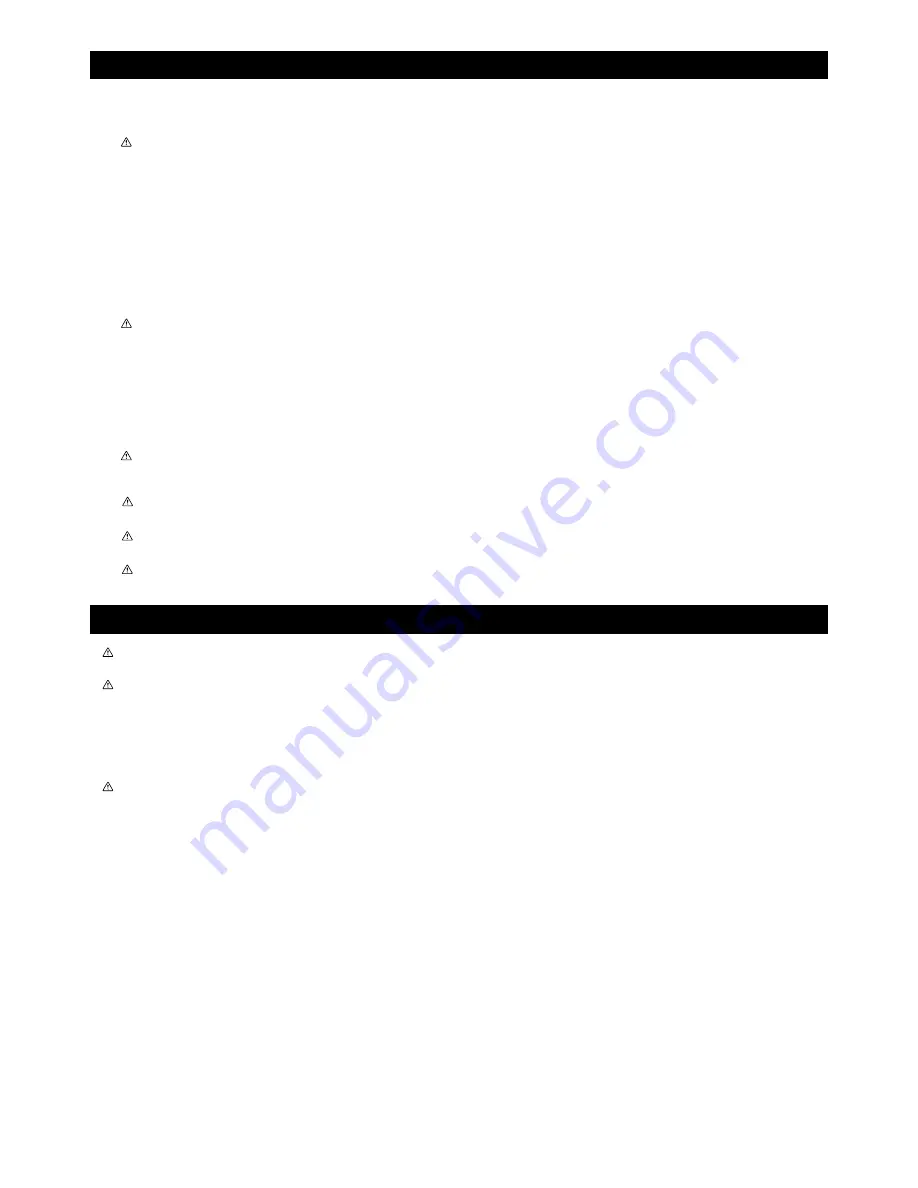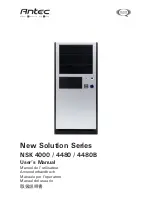
6932 06/14
Installation
Ongoing Maintenance
1. Once the headset cups have been installed into the frame according to the headset manufacturer’s instructions, install
the crown race. Holding the fork in one hand, install the headset’s fork crown race onto the fork race seat with a headset
crown race setting tool and hammer.
WARNING: Do not rest the fork dropouts on the floor or other hard surface; doing so can damage the fork, making
it unsafe, dangerous, or deadly to ride.
2. Install the bottom assembly of the headset according to the manufacturer’s instructions and insert the fork into the
headtube. Install the top assembly of the headset according to the manufacturer’s instructions.
3. Install the stem on the steerer and slide it down to seat it firmly against the spacers on the top of the heasdset. Gently
tighten the stem’s steerer clamp bolt(s) just enough to hold the assembly in place.
4. Mark the steerer tube at the top edge of the stem. Remove the stem and spacers from the steerer and the fork from the
bike. Mark the steerer again, this time 3mm below the first mark. This will be your cutting mark.
5. To ensure a square cut, the use of a steerer tube cutting guide is strongly recommended. Using a hacksaw with a fine-
toothed metal cutting blade, begin cutting the steerer at the cutting mark —the use of cutting fluid is recommended.
Once cut, use a file to remove any burrs on the inside and outside edges of the steerer tube.
6. Install the star nut supplied with the headset into the steerer tube per the manufacturer’s instructions.
WARNING: Again, do not rest the fork dropouts on the floor or a hard surface; doing so can damage the fork,
making it unsafe, dangerous, or deadly to ride.
7. Reinstall the fork, headset assemblies, spacers, and stem, and pre-load the top cap to attain the proper headset
adjustment in accordance with the headset manufacturer’s instructions. Tighten the stem’s steerer clamp bolt(s)
to the stem manufacturer’s specifications.
8. Attach the front wheel to the fork, and align the stem with the front wheel. Tighten the stem’s steerer clamp bolts to the
stem manufacturer’s specifications. While straddling the top tube and holding the front wheel between your legs, make
a strong attempt to rotate the stem around the steerer. If the stem rotates, increase the torque on the steerer clamp
bolts; do not exceed 7Nm.
WARNING: Alignment of the front wheel assembly should not be less than 6mm clearance between the tire, frame,
fork, or fender and its attachment bolts. Inadequate tire clearance can result in serious injury or death.
9. Follow the wheel manufacturer’s instructions for correct clamping of the wheel quick release and install the front wheel.
WARNING: Failure to properly adjust the quick release and secure the wheel can result in serious injury or death.
10. Install and adjust handlebar to stem following stem and handlebar manufacturer’s instructions.
WARNING: Failure to properly install and adjust handlebar and stem can result in serious injury or death.
11. Install and adjust the front brake following the brake manufacturer’s instructions.
WARNING: Failure to properly install and adjust brakes can result in serious injury or death.
12. Check the tightness of the stem bolts before each ride, and inspect the fork for damage before every ride.
WARNING: Do not modify the fork, other than cutting the steerer tube to the correct length for your bicycle.
Modifying the fork could cause fork or other component failure resulting in serious injury or death.
WARNING: Every bicycle product has a finite useful life. A bicycle and its components such as forks are subject to wear
and stress. Different materials and mechanisms wear or fatigue from stress at different rates and have different life cycles.
If a component’s life cycle is exceeded, the component can suddenly and catastrophically fail, causing serious injury
or death to the rider. This is why you need to frequently inspect your bicycle and its components for any signs of wear
or fatigue. Scratches, cracks, bending, fraying or discoloration are all signs of stress-caused fatigue and may indicate that
a part is at the end of its useful life and needs to be replaced. When you see any signs of fatigue or damage, do not ride the
bicycle. Take it to a dealer for inspection, repair or replacement as necessary.
WARNING: While the materials and workmanship of your bicycle, bicycle fork or of individual components may be
covered by a warranty for a specified period of time, this is no guarantee that the product will last the term of the warranty.
Product life is often related to the kind of riding you do and to the treatment to which you submit the bicycle. The warranty
is not meant to suggest that the bicycle or component cannot be broken or will last forever. It only means that the product
is covered subject to the terms of the warranty.
Loosen the stem’s steerer clamp bolts before making any stem-to-fork alignment adjustments.
Periodically remove, clean and inspect your fork for damage, cracks or any other damage. Any questions about marks
or cracks on the fork should be directed to your Surly dealer immediately.
Regularly inspect all components for any damage (cracks, chips, etc.) and replace components upon detection.
In the event of a crash or impact, carefully inspect handlebars, fork, stem, seatpost, wheels and the frame for any visible
damage. As with any component under varying degrees of stress there is a fatigue life that is proportional to the type
of use and abuse applied to the part. Always inspect your components before a ride. If you have doubts about the integrity
and condition of any part, replace it. Consult your dealer if you are unsure about the condition of your Surly fork or any part
of your bicycle.
Installation





















